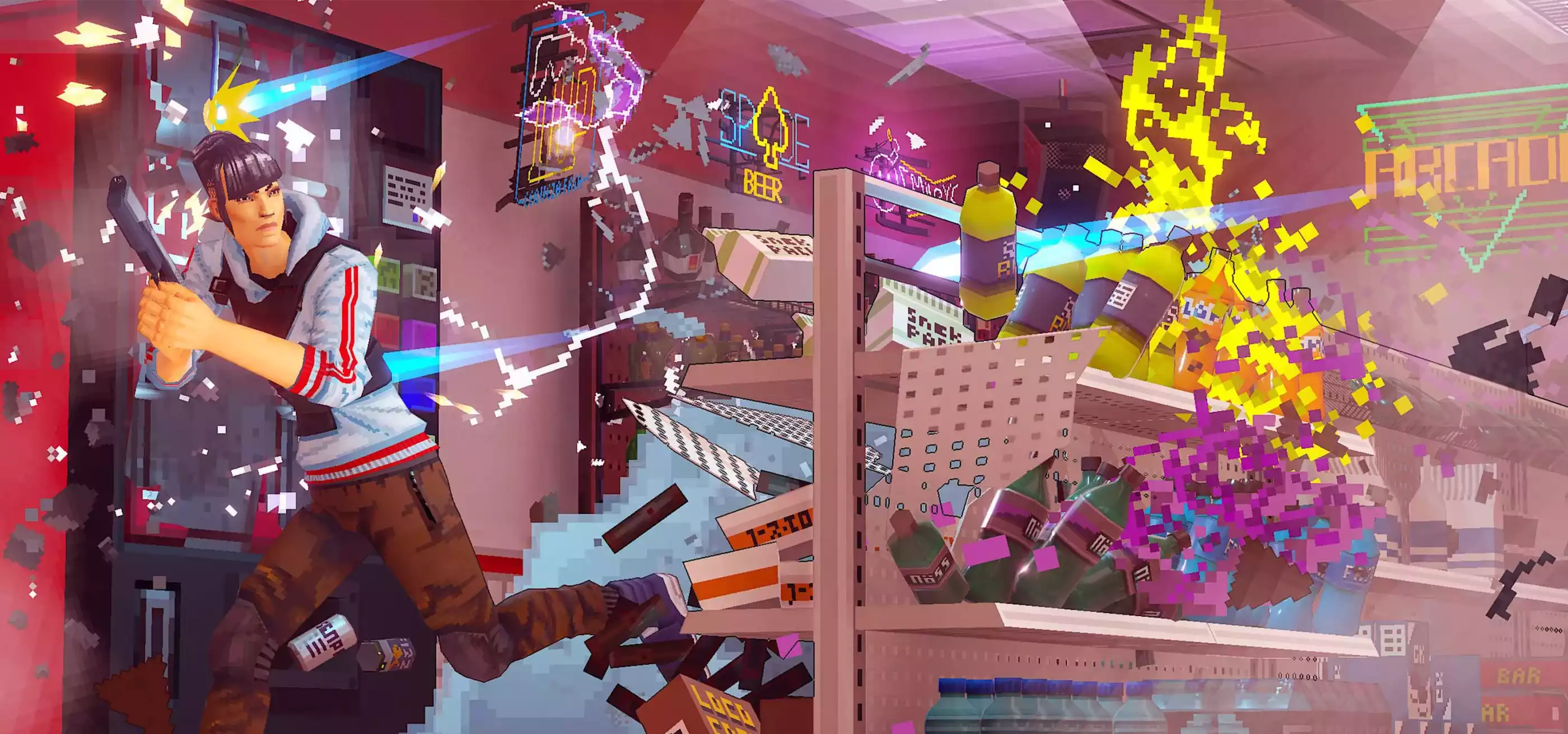When former DigiPen students Alexander Baard and Vincent Grubbs left their studies to enter the game industry back in 2014, they decided to do things a little differently. Baard and Grubbs’ DigiPen game team projects, Super Space ____ and Grand Theft Flying Object, both took novel design approaches to multiplayer, co-op gameplay, and they found success in doing so. The former game even earned a nomination for the Excellence in Design award at the 2013 Independent Games Festival. “I knew Vince and I had the chops to make a game that people would be interested in playing, which is an elusive but essential quality that all game studios must have,” Baard says. So rather than searching for an entry-level studio job fresh out of school, they started their own game studio in Seattle. They picked a name — Giant Enemy Crab — and gradually recruited eight fellow DigiPen Dragons to join their ranks.
After six years in development, the studio’s debut title, Due Process, recently entered Steam Early Access, where it’s quickly earned rave reviews from critics and players alike. A testament to the studio’s talent, fans have been heralding Due Process for bringing something genuinely new to the table. A five-versus-five online first-person shooter, the game features procedurally generated levels, a tactical pre-planning phase, asymmetrical gameplay, and a stylish, neo-90’s chunkiness that ties it all together.
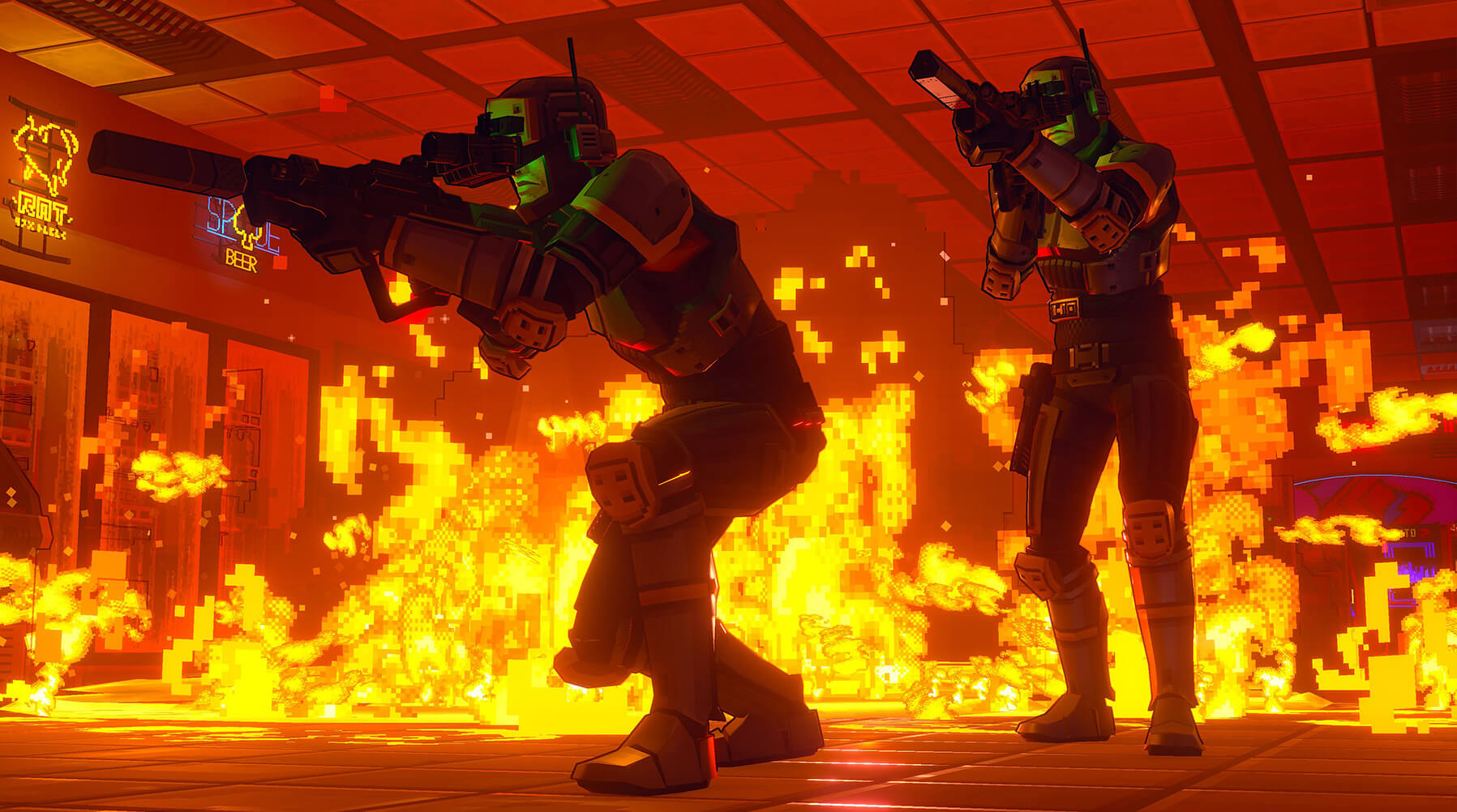
“I think what [Super Space ____’s IGF nomination] taught me was that if you pick an objective for your game to accomplish that really hasn’t been done before, and exclusively implement features in service of that goal, you’ll end up with a game that gets noticed,” Baard says. “With Due Process, all the design features were implemented in service of one goal: Make planning matter.”
Set in a dystopian cyberpunk future, Due Process pits two distinct teams with unique loadouts and goals against one another. The Defenders, a group of anti-corporate outlaws, always begin matches inside the building. Their goal — defend the bomb they’ve set from being defused by the Argus Enforcers, a militarized corporate police squad. Enforcers always start matches outside the building and have access to high-tech weaponry that The Defenders must meet with their antiquated arsenal and sheer scrappiness. “We want the game to feel like both sides are fighting an unfair fight,” Baard says.
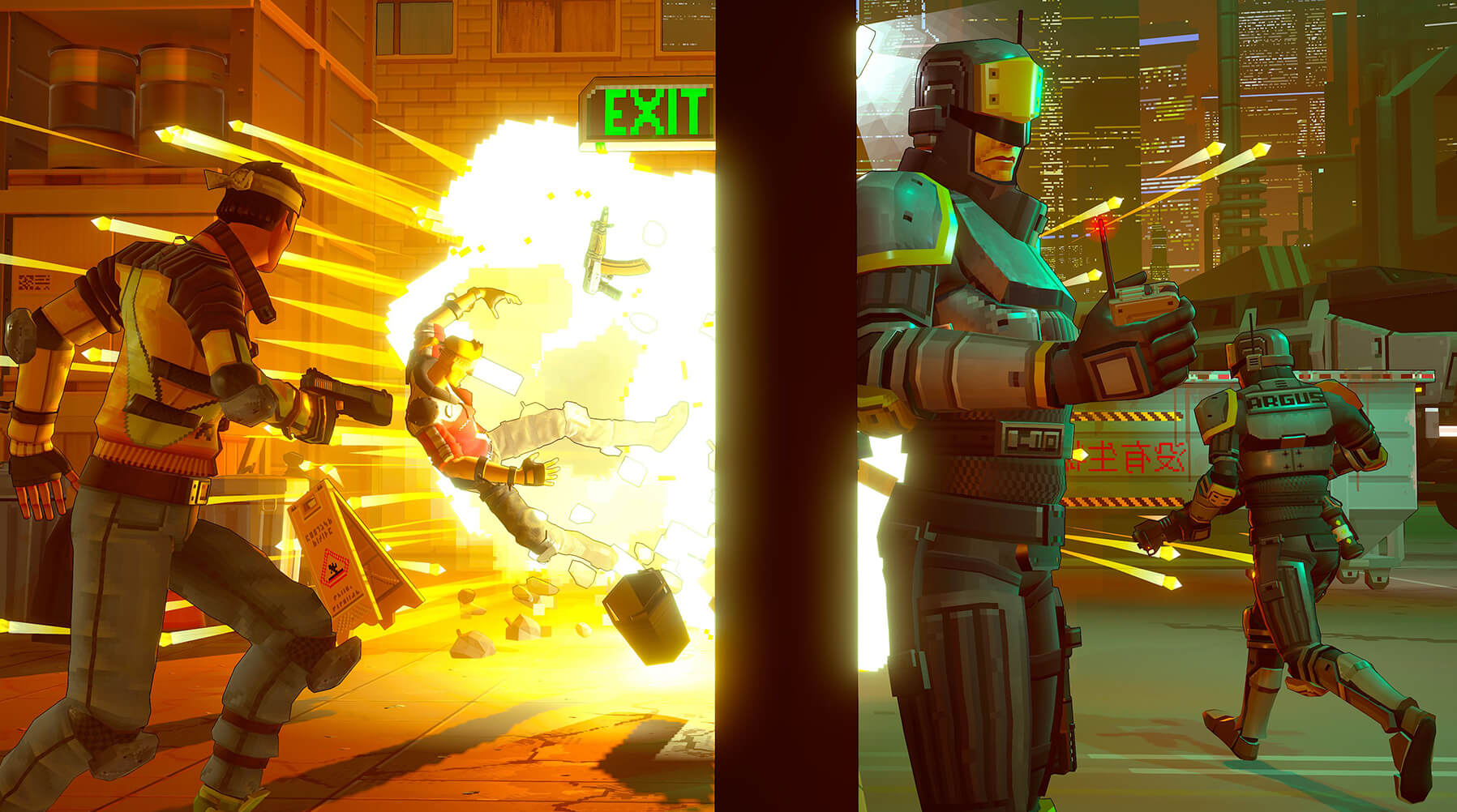
While Due Process was inspired by tactical shooters, the genre also posed the game’s earliest design challenge. “The main problem to solve was the game breaking down into a ‘meta,’ where players memorize a strategy and repeat it ad infinitum,” Baard says. “We suspected the problem would be solved by procedurally generating small levels. If the level was new every time, you’d obviously have to think critically about how you were going to attack or defend the structure, instead of simply memorizing ‘peek here at this time to get a kill.’”
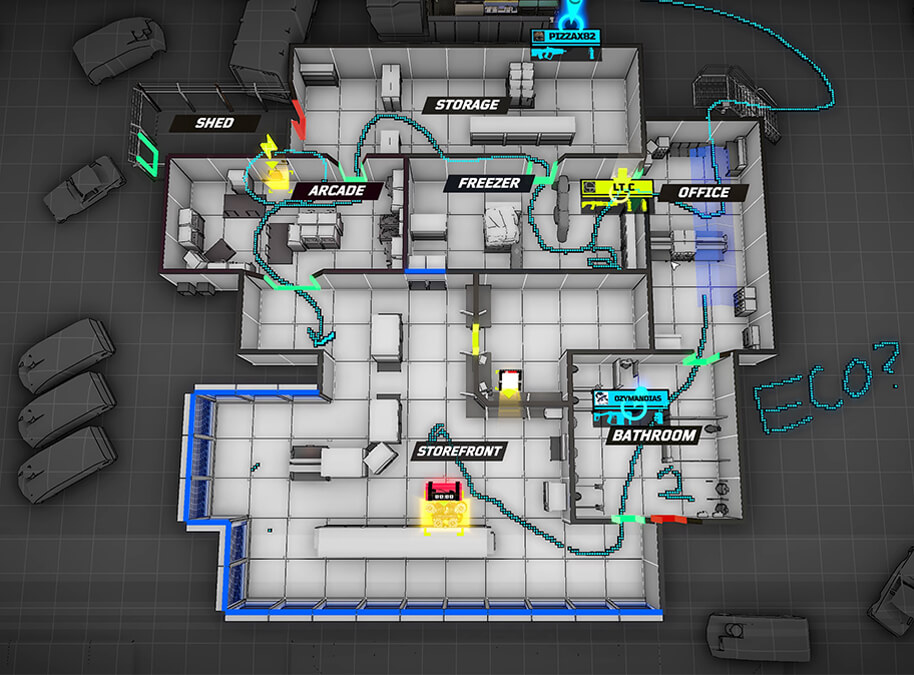
To reckon with the surprise each new procedural level brings, both teams begin matches in a chat-based planning phase, coordinating their assault plan or defense plan by drawing directly on the map. Those plans then appear on the ground as pixelated markings once the match begins. “One of the initial goals of the interface was to keep things simple,” says David Scamehorn, the game’s lead UX designer and a 2014 BA in Game Design graduate who co-created Super Space ____ with Baard. Scamehorn’s personal fondness for Y2K visual design makes its way into the interface, providing a subtle contrast that helps it stand out next to the game’s main visual influence — the charming chunk of 90s 3D.
“At the start we were heavily influenced by classic 3D games on consoles like the PS1, N64, and Dreamcast,” says Valdis Matas, the game’s concept/particle effects artist and a 2015 BFA in Digital Art and Animation graduate. “Later we would start looking at arcade games like Time Crisis, Virtual-On, L.A. Machine Guns, or Die Hard, as those tended to have more complex graphical effects that were impossible on the home consoles.”
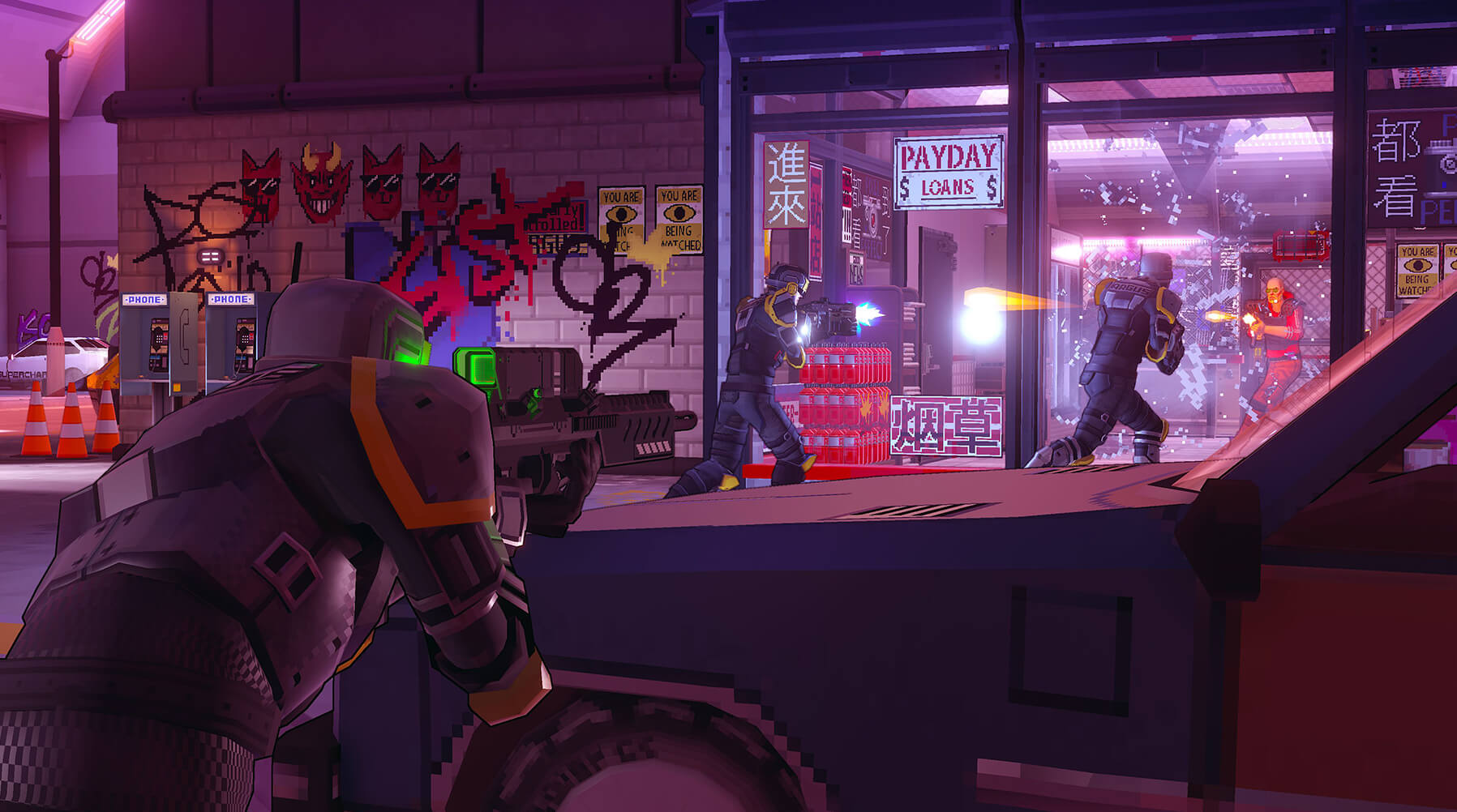
Rather than simply replicating the style, Giant Enemy Crab developed their own updated take. “We opt for low-poly models with pixelated textures as a means to expedite asset creation and then combine that low-res style with modern day lighting and rendering techniques to give the visuals greater depth,” Matas says. The result feels simultaneously retro and new, making the game’s frantic tactics pop on screen.
With development starting in 2014, whipping the game into its polished, present state was neither quick nor easy. “The initial prototype being so successful in terms of communicating the experience is what enabled us to make it to today,” says senior engineer Nathan Hitchcock. “But in order to get the game to a production-ready standard, we had to do a metric ton of refactoring.”
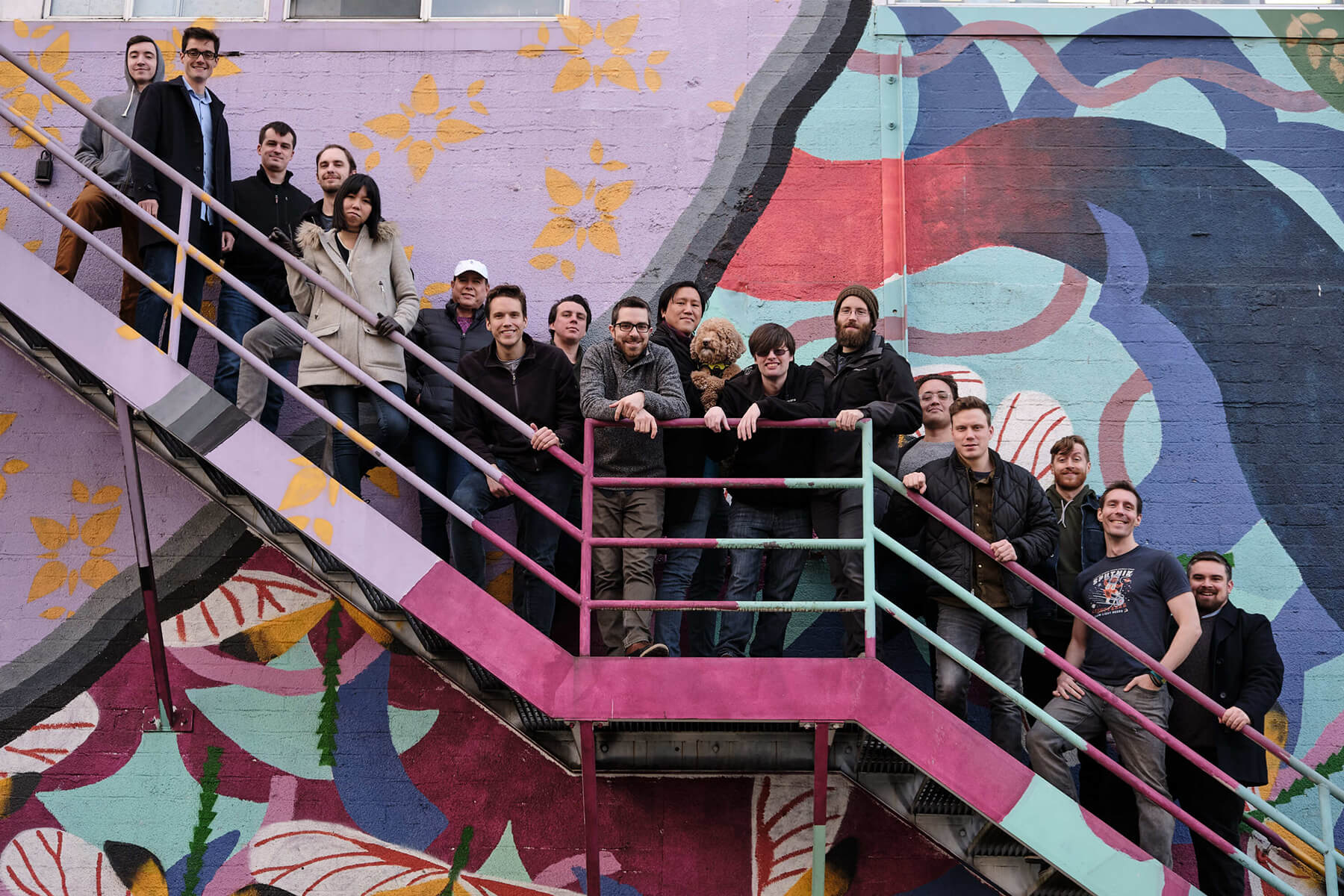
A 2015 BS in Computer Science in Real-Time Interactive Simulation graduate, Hitchcock says the team has had to conquer more than a few scary code blocks since he joined in 2018. In one particularly do-or-die moment, the team had to execute a large, high-risk rewrite of the game’s fundamental networking code – all on a tight deadline. “Failing would have meant shipping a much older version of the game that couldn’t get anywhere near our performance or stability requirements,” Hitchcock says. “Luckily, again, our talented engineers pulled together.”
Of the many skilled developers that made Due Process possible, more than half are DigiPen alumni, including Anh Do, Jesse Russell-Klarich, Kevin Kaufman, Adam Balk, and Ryder Hanson. That the game was picked up by prestigious indie game publisher Annapurna Interactive makes their achievement even more impressive. “They’ve been the dream publisher,” Hitchcock says. “We’ve had full creative control, and they’ve been wonderfully supportive.” Players have lent their support as well, leaving over 2,300 very positive reviews on Steam. “It’s been really nice seeing people appreciate the game,” Hitchcock says. “It’s even nicer being able to play ranked games against some new blood so I can boost my rating!”
